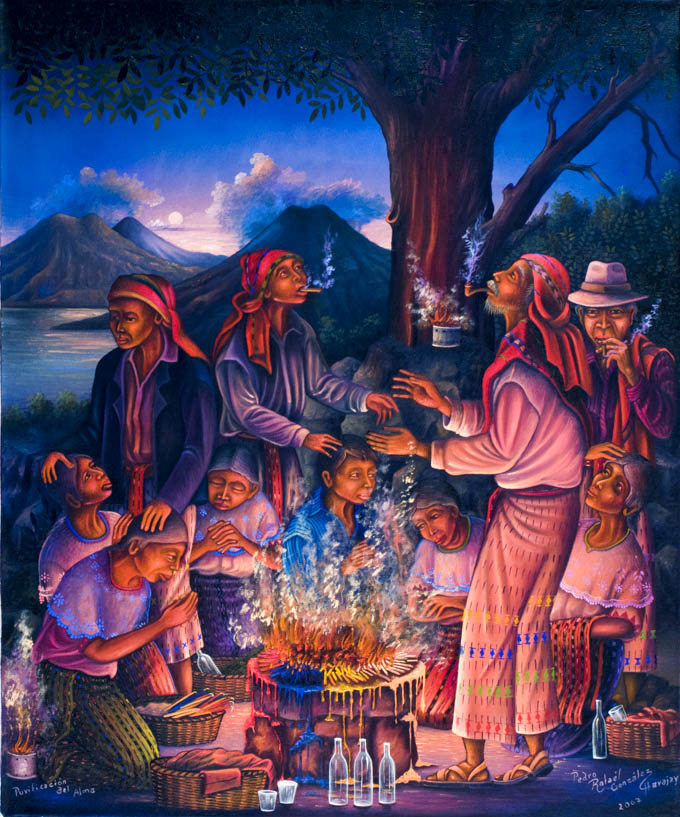|
Purification of the Soul by Pedro Rafaél González Chavajay, 2002.
The three men in this painting wearing the tzutes (head scarves) are ajk’ijab (Maya spiritual guides).
Pedro Rafaél explains that the ajk’ijab assist in cleansing the participants of their past problems and bringing them
in line with nature so that their future activities will succeed. Traditional offerings for Maya rituals are included
in Pedro Rafaél’s depiction: colored candles, incense, alcohol, and the fire that consecrates the space. The participants
are wearing the traje of San Pedro la Laguna, a town at the base of the Volcán San Pedro, the central volcano in the
painting.
The Maya believe that ritual sites have energy which comes not only from the site’s location, but also from the accumulation
of rituals performed there. The sites seem often to have been chosen because they are the most spectacular geographic feature
in the area, such as a mountain top, a cave, or a waterfall. The site in this painting is the Nariz del Indio (the nose of
the Indian), a twenty-minute walk outside of Santa Clara la Laguna. It was so named by the Maya because, from the lake,
the mountain looks like the profile of a reclining Maya, with the highest point being the tip of his nose.
Recently, scholars who are Maya have discovered that outside of every Maya town there are between five and thirty sites where
rituals have been performed in the past. Some sites are still used, others have been forgotten. Although not visible in this
painting, participants can see two other sacred sites across the lake, one at Cerro del Oro, and the other near Sololá. It is
believed that in the past the Maya used these sites upon occasion to communicate with each other, probably via smoke signals.
|
